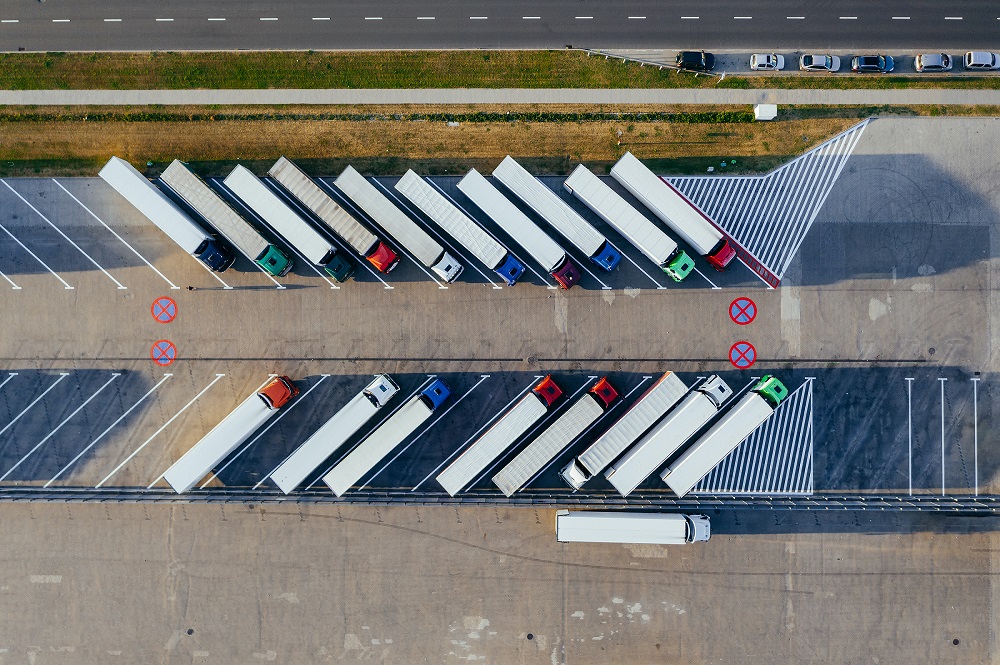September 23, 2024
5 Advanced Email Marketing…
Is your business looking to implement some new B2B email...

With rising fuel prices, booming e-commerce and the pressure to commit to net-zero, the heat really is on for the logistics sector. Ahead of this year’s Multimodal show, we take a look at the challenges facing the supply chain industry and look ahead to what the future may hold for the sector.
Freight operations play a crucial role in feeding the nation and have shown resilience in the face of spiralling fuel prices, providing employment and generating growth. But with e-commerce continuing to soar and mounting pressure to reduce emissions, what steps can the logistics sector take to future-proof their operations?
The need to reduce road transport emissions is well understood and supported, but it presents serious challenges for the supply chain sector. Whilst there are moves towards rechargeable electric vans, for HGVs the technology to achieve zero emissions is simply not yet within reach.
This is where the sector has begun to harness the power of technology and innovation to find ways in which emissions can at least be reduced, for example using apps to determine the journey options with the lowest carbon footprint. Often these decisions are within the power of the smartphone wielding consumer, yet increasingly, technology is being developed which allows these choices to be made at an operations level, in direct correlation with real-time traffic data.
With more than 70% of UK logistics companies reporting a sharp spike in the cost of transporting goods when compared to the same period a year ago, taking the least polluting route option also makes economic sense. Naturally, the ‘greenest’ route options are also the most cost-effective in terms of fuel consumption, an added benefit for logistics companies in these times of rising fuel prices.

But if we’re going to move towards a greener future for logistics, the importance of collaboration cannot be overstated. Data sharing and technology can be used to boost a logistics company’s green credentials, but these initiatives are most effective when all levels of the supply chain are committed to the same ideals and practice. How can this be ensured when operations are outsourced at different points along a product’s journey? Well, it seems a return to a vertical integration business model is in order. Bringing all, or most stages of the process under one business can allow tighter control over the value chain.
Integrated communication across all levels of the supply chain has even further reaching benefits beyond the reduction of emissions. Vertical integration was the standard business model around about the middle of the last century. But since the early 1970s logistics organisations have taken on increasingly diversified structures. However, as e-commerce continues to grow exponentially, the competition is on to provide the best service possible at the best rates to consumers.
When vertical integration is embraced by a company, ownership of an entire value chain means that excellent customer service doesn’t depend on external distribution channels. Quality can be more easily controlled all the way through the supply chain, putting your company in a stronger position. Essentially, it’s a risk mitigation strategy that can help streamline operations and reduce supply risks and delivery disruptions.
But it’s not something to be taken lightly. Despite the obvious benefits such as improved control over distribution, increased stability and the ability to develop stronger quality assurance solutions, vertical integration isn’t for everyone. There are situations where your reputation as a specialist in a certain area means it would work better for your company to retain and build upon that, especially if you hold a corner of a niche market.

The addition of new supply chain operations might just draw attention away from those aspects which previously formed the core of a business, potentially leading to losses. And, of course there are costs involved in vertical integration. Legal or administrative costs arising from the merging of two businesses, the capital needed to acquire another business, and the human costs. That is to say that one of the most important and challenging parts of bringing multiple businesses together as one is the cultural integration of different staff teams. Uniting staff from a broad range of disciplines with different workplace values and cultures is no easy task.
Happily, there are several options out there these days for companies wishing to vertically integrate without the massive capital requirements and risks involved in acquisition. Solutions such as franchising or the use of long-term contractual agreements for example, can deliver many of the benefits of vertical integration, and can be closely monitored and managed by means of the latest technology.
Taking place at the NEC in Birmingham, UK, on 13-15th June, is this year’s Multimodal show, the UK and Ireland’s premier event for the freight, logistics and supply chain sectors. As well as the exhibition, there’s also a multitude of seminars on offer covering such topics as vertical integration of supply chains, sustainability and how logistics companies can embrace change.
At Allott and Associates we’ve been providing PR and marketing support to the logistics community for over 25 years. We’re looking forward to this year’s show and getting a taster of what the future holds for the industry.
Are you looking for specialised support to bolster your presence in today’s increasingly competitive market?
Get in touch here or contact us on 01423 867264, to find out how you can benefit from the support of a full-service team which understands the complexities of the logistics sector.